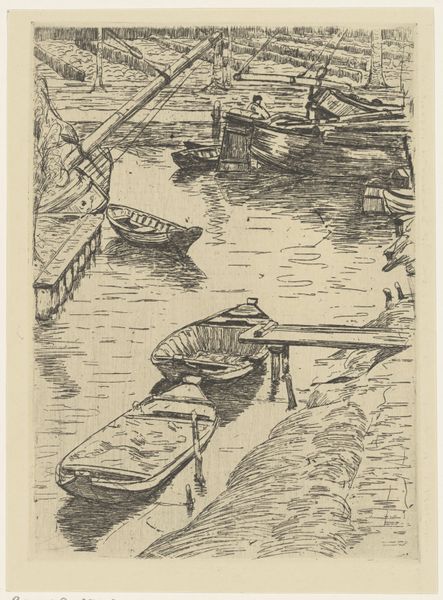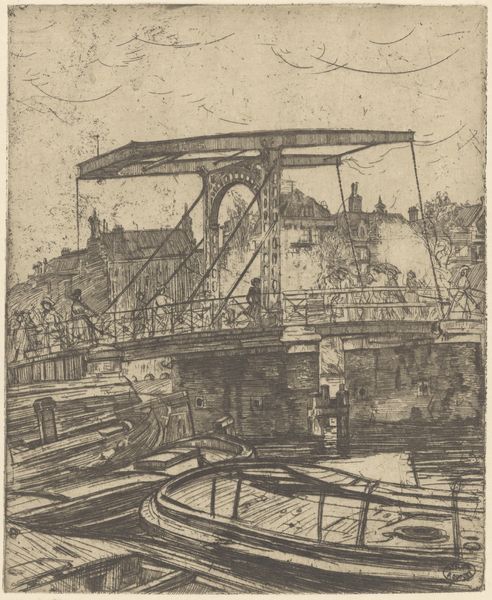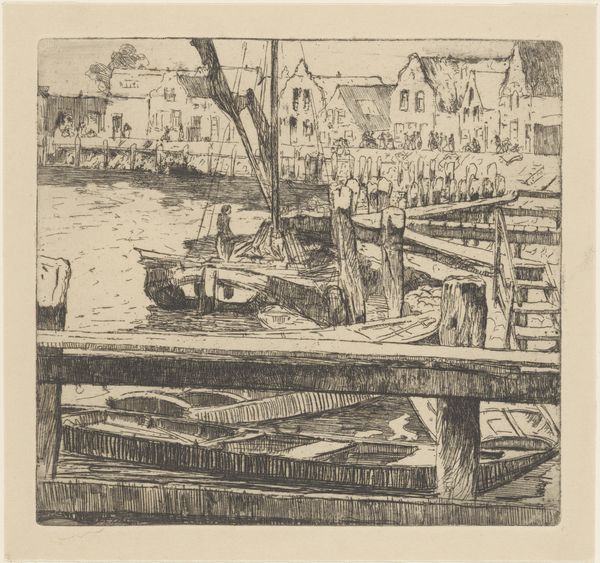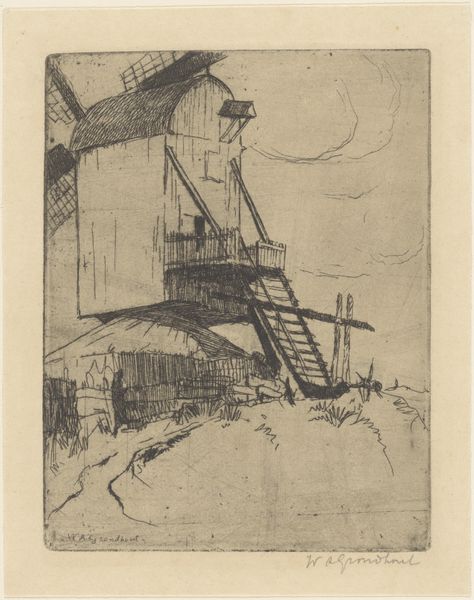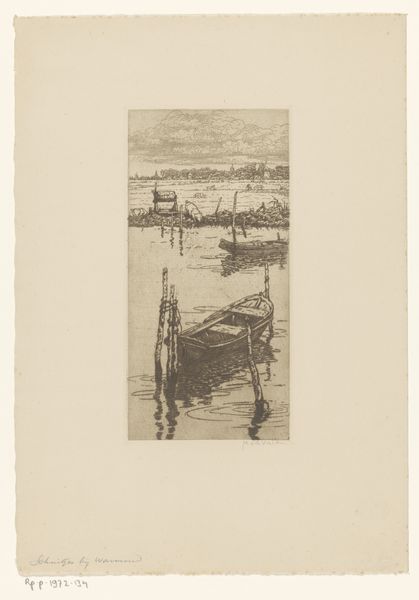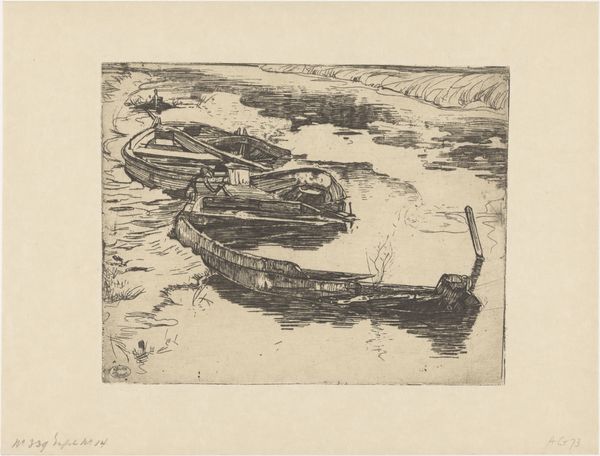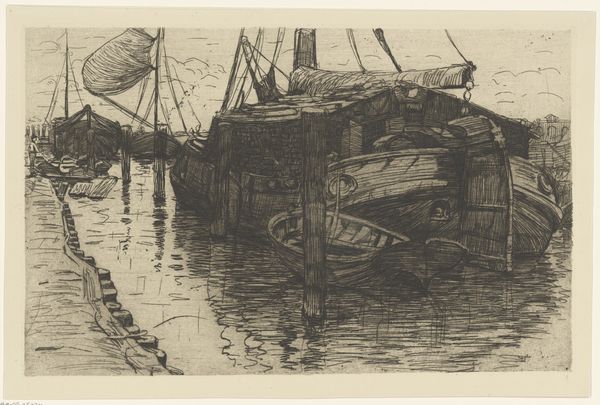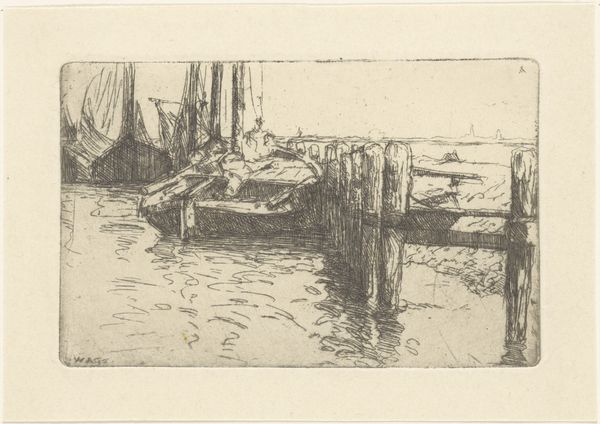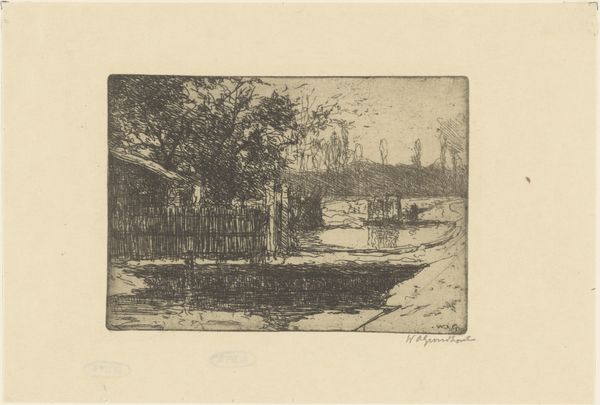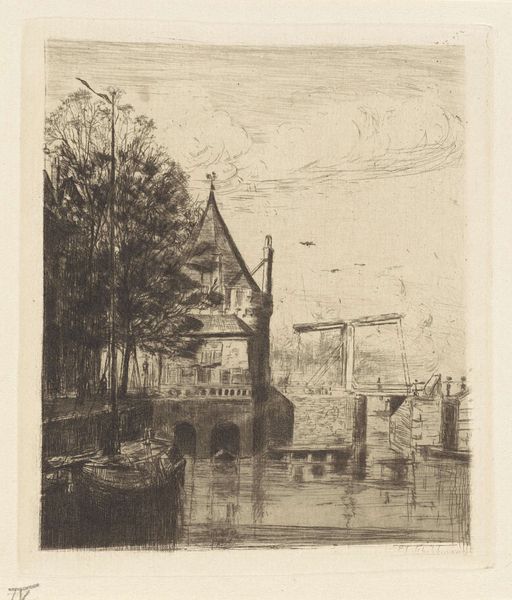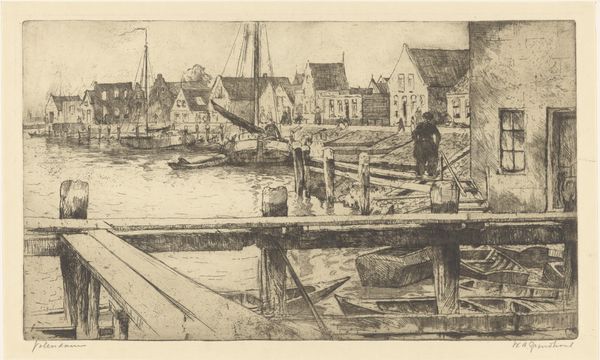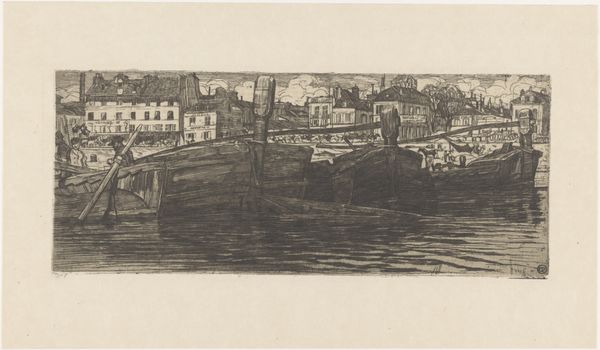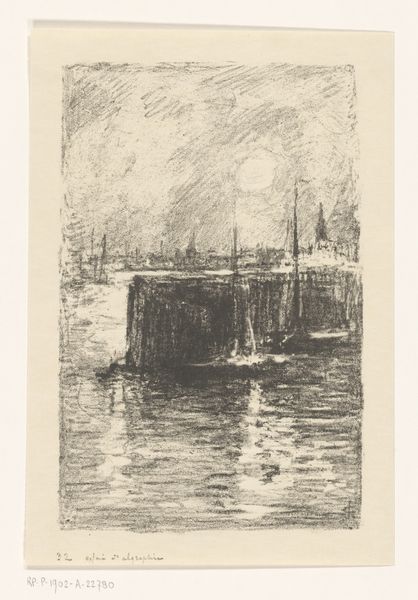
drawing, print, etching, engraving
#
drawing
#
dutch-golden-age
# print
#
etching
#
landscape
#
line
#
cityscape
#
engraving
#
realism
Dimensions: height 307 mm, width 237 mm
Copyright: Rijks Museum: Open Domain
Curator: Here we have "Volendam," a cityscape etching and engraving by Willem Adrianus Grondhout. The work was created sometime between 1888 and 1931 and now resides here at the Rijksmuseum. Editor: Immediately, I’m struck by the quietude of the scene, a stillness almost. The muted tones of the etching give it a very melancholic air. It almost feels like a memory fading into the past. Curator: That feeling speaks to the historical context of such scenes in art. Etchings and engravings like these served a very important function in visually recording landscapes and cities, thus shaping their popular images for widespread consumption. Think postcards, promotional material for burgeoning tourist destinations. Editor: Absolutely. And how might that influence our reading of gender within the artwork? We see a solitary figure attending to the boat; who is this woman, and what’s her role in this economy of image and place? Is she a figure of labor, invisibilized within this otherwise picturesque view? Curator: Those are excellent questions. While seemingly an objective landscape, these types of prints very much played a role in constructing notions of the quaint, “authentic” Dutch experience that served commercial and nationalistic interests. And by emphasizing women's work, were these scenes consciously designed to represent a specific gendered social structure? Editor: Looking closely at the buildings in the background, there are small details—groups of people gathered outside. The artist captures a community in what seems like everyday life. Curator: Precisely. These small moments reveal the function and significance of printmaking within local visual culture. By democratizing access to these kinds of views, these works shaped how both locals and tourists perceived the Dutch landscape and social life within it. Editor: Considering these points of view together provides a deeper context than either allows alone, doesn't it? Thanks for guiding me through a reading that integrates those things! Curator: My pleasure! This nuanced interplay of the picturesque and the political continues to be extremely valuable to art historical inquiries.
Comments
No comments
Be the first to comment and join the conversation on the ultimate creative platform.
